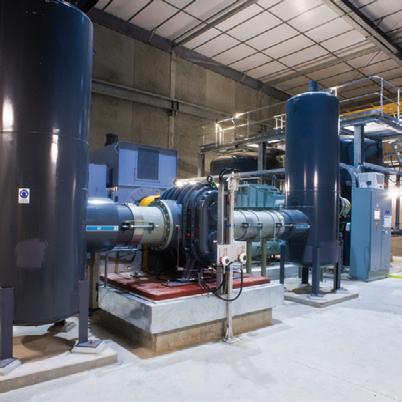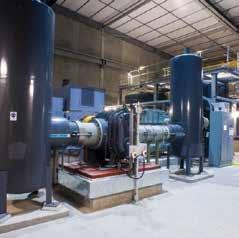



August 26–29, Las Vegas, NV









August 26–29, Las Vegas, NV




Volume 52 / No. 5 • September 2024
Editor-in-Chief: Dr. Saad Jasim
Ozone News (ISSN 1065-5905) is a bimonthly publication of the International Ozone Association (IOA). Annual subscription rate: $150.00. For editorial and advertising information, please contact:
International Ozone Association/Editorial Office
Attn: Dr. Saad Jasim, P.Eng.
4483 Cherry Hill Road
Windsor, ON N9G 2W3
Canada
Tel: +1-226-280-3522
Email: saadjasim@ioa-pag.org and sjenvcons@gmail.com
Membership and Publication Information:
The International Ozone Association is a nonprofit educational and scientific organization dedicated to the collection and dissemination of information on, and to promote research in, any and all aspects of ozone and related oxygen species technologies. Membership is open to any individual, corporation, or organization having interest in the latest developments and advancements in ozone technology.
As a member of the IOA, you’ll receive bimonthly issues of Ozone News, bimonthly issues of the technical journal Ozone: Science & Engineering (OS&E), and IOA’s Publication Catalog, which includes worldwide conference proceedings, monographs, and special reprints. In addition, members receive discounts on IOA worldwide publications and meetings.
Website: www.ioa-pag.org
For membership and publication information, please contact the IOA office nearest you:
Pan American Group (PAG)
International Ozone Association, Pan American Group
Attn: Megan Corcoran
c/o AAMSI 1521 I Street Sacramento, CA 95814
Tel: (1) 916-441-0629
Email: support@ioa-pag.org • Web: www.ioa-pag.org
European-African-Asian-Australasian Group (EA3G)
Ms. Beatrice Bernard, Secretariat
IOA-EA3G Secretaruat
7 rue Marcel Doré - Bât. B16
86000 Poitiers France
Tel: 33 (0) 5 49 45 44 54
Fax: 33 (0) 5 49 45 40 60
Email: ioa@esip.univ-poitiers.fr • Web: www.ioa-ea3g.org
Nippon Islands Group (NIG)
Mr.. Tetsuya Tamura
Japan Ozone Association
Intelligent Flats 301, 10-10 Nihonbashi Tomizawa-cho
Chuko- Tokyo 103-0006, Japan
Tel: (81) 3 6661 1622
Fax: (81) 3 6661 1623
Email: tamura@j-ozone.org • Web: www.j-ozone.org

TGA Lists Stabilized Aqueous Ozone as a Disinfectant
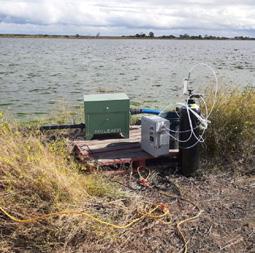
10 Southern Nevada Water Authority Receives Funding from The Water Research Foundation to Study Ozone Nanobubble Technology
12 Ozone in Medicine. Ozone as Redox Bioregulator.
17 Ozone Sidestream Injection: One-Year Review
20 Welcome, New Members!
October 7–11, 2024 Iberoamerican Conference on Advance Technologies, Florianopolis, Brazil
November 17–21, 2024 American Water Works Association Water Quality Technology Conference, Schaumburg, IL. www.awwa.org
November 27–29, 2024 — Europe, Africa, Asia, Australasia Group 2024 International Conference (EA3G2024), Porto, Portugal. www.ioa-ea3g.org
April 8–10, 2025 Advanced Oxidation Processes 7th International Conference, Frankfurt am Main, Germany
August 25–28, 2025 International Ozone Association (IOA) World Congress, Atlanta, GA. www.ioa-pag.org

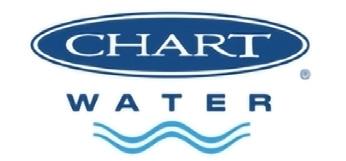
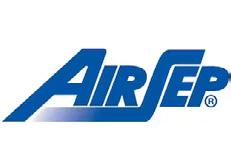



INDEX OF ADVERTISERS
Page 2 Air Physics Co., Ltd.
Page 4 ANSEROS Klaus Nonnenmacher GmbH
Page 5 Statiflo
Page 6 Plasma Technics, Inc.
Page 7 Teledyne API
Page 9 Tersano
Page 12 BMT
Page 13 BMT
Page 19 Mazzei
Page 24 AirSep
Copyright ©2024 International Ozone Association. All rights reserved. No part of this publication may be reproduced, stored, transmitted, or disseminated in any form or by any means without prior written permission from the International Ozone Association. The publisher assumes no responsibility for any statements of fact or opinion expressed in the published papers.


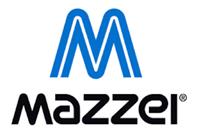






The International Ozone Association-PAG (IOA-PAG) took place in Las Vegas, NV on August 26-29, 2024. The excitement of a new generation of Ozone professionals was so visible, and we, the Ozone veterans, are so pleased to see that. Delegates from nine countries participated, showing the exiting success of Ozone applications, from water reuse, improvement of water quality, etc.
We look forward to see more involvements of young ozone professionals in future conferences.
Dr. Saad Y. Jasim, P.Eng. Ozone News Editor-in-Chief International Ozone Association
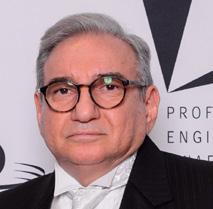

The 2024 IOA-PAG Conference in Las Vegas, Nevada delivered a great opportunity for nearly 200 participants from nine different countries to discuss recent advances in ozone! The event included a sold-out Ozone Basics workshop, two days of technical presentations, an afternoon of round table discussions, 20 exhibitors, and a sold-out technical tour. We appreciate all the sponsors who make it possible to hold this annual gathering where the IOA can truly provide educational opportunities and connections.
IOA-PAG is looking forward to hosting the World Congress in Atlanta, Georgia Aug. 25–29, 2025, at the Omni Atlanta Hotel at Centennial Park. We already have a fantastic evening event planned at the Georgia Aquarium on Aug. 26 including dinner, access to all the exhibits, and behind the scenes ozone tours. We can’t wait to see you in Atlanta next year!!

Statiflo supply a range of custom designed Ozone contacting systems which continually meet and exceed our guaranteed 95% mass transfer efficiency.
Key benefits include:
• Highly efficient mixing
• Continuous performance over a wide flow range
• Smaller sidestreams than competitive solutions resulting in significant energy savings
• Very low pressure loss
• Uniformly distributes ozone
• No deterioration in performance after prolonged use
• Easy to install
• Available in all sizes
• Available in both pipe and duct designs
The Statiflo Gas Dispersion System (GDS) is often used by our customers to replace other high-maintenance and low-efficiency technologies, reducing overall costs and reducing your environmental impact.
• Suitable for new and retrofit installations
• Custom designed for each application
Aug. 26-29, 2024 Palms Casino Resort Las Vegas
By: Dr. Saad Jasim, Editor-in-Chief
The International Ozone Association-Pan American Group (IOA-PAG) conference started on Tuesday August 27 with welcome remarks from Denise Funk, Brown and Caldwell, President of the International Ozone Association Pan-American Group (IOA-PAG). President Funk thanked the IOA Annual Sponsors, conference sponsors, the 20 exhibitors and the conference attendees for their support. The conference had 195 participants from 9 countries. President Funk indicated that the successful “Ozone basic workshop” on Monday August 26 had 45 attendees.
Dr. Eric Wert, the President of the International Ozone Association, delivered his welcome remarks to the conference attendees.
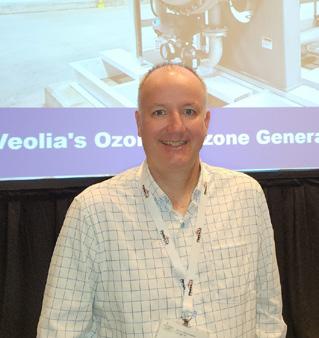
The conference Keynote Speaker; Paul Westerhoff, Regents Professor, Arizona State University, delivered his presentation to the conference titled: “I’m going on a trip, and I’m taking Ozone along.” Professor Westerhoff delivered a thorough and interesting historical trend of ozone applications and development of the guideline for Bromate-the disinfection by product for ozone. Professor Westerhoff presented some of the latest applications to address water quality challenges.

The IOA-PAG conference delivered the following awards: Haley Kuhn: the Best Student Presentation Award
Gabson Baguma: Memorial Scholarship Award
Sheng-Chun Fang: Memorial Scholarship Award
The Technical Program included started on Tuesday August 27, with the following Sessions (selected papers are presented in this report):
• Nanobubble Applications
• Trends in Ozone
• Design Considerations for New Systems and Refurbishments
• DPR Piloting and Control Schemes
• Drinking Water Applications: Contaminants
• Ozone System Maintenance and Refurbishment
• Drinking Water Applications: Cyanotoxins, T&O
• Ozone Based AOP in Wastewater Reuse

• Industrial Uses
• Ozone for Wastewater Applications
• Methods
• Ozone-BAF/BAC
Round Table Session involved conference attendees Participating in smaller group discussions and ask more questions than during the usual podium presentations. Each table had a host/subject matter expert, and attendees rotated among the tables every 15 minutes.
The conference presentations involved ozone applications to improve water quality, how to assist in water reuse processes, Taste and Odour Control and many other interesting topics. The following are some of these presentations;
• “Tiny Bubbles Making Everything Fine at the Greenway Water Treatment Plant”, Dylan Lesan, Carollo Engineers: In 2002, the City of Peoria (City) Greenway Water Treatment Plant (WTP) was placed into



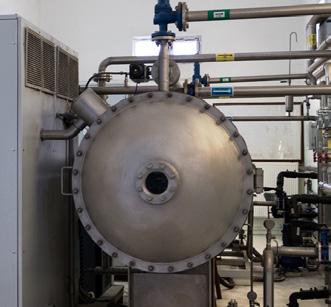

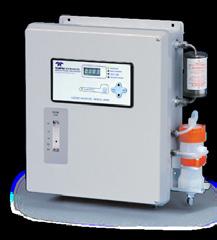
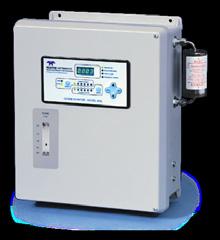


operation in 2002 with Pilot scale testing the nanobubble system in the plant preliminary sedimentation basin, a reduction in algae in the preliminary sedimentation basin as well as some reduction in downstream plant process including the final sedimentation basins was observed. In 2023, a permanent, nonproprietary approach similar to the piloting system was constructed for long-term algae control.
• “Combining ozonation with activated carbon adsorption to produce water for agriculture”, F. Dantas, University of Campinas: The study explored the integration of ozonation with activated carbon adsorption for treating municipal effluents. The findings indicated that coupling ozonation with activated carbon effectively reduces metal content and mitigates toxicity to vegetables. Furthermore, hydroponic lettuce cultivation using recycled water demonstrated promising growth, underscoring the method’s potential significance for agricultural reuse.
• “New Life for Air Feed Ozone System”, Alex Bettinardi, DeNora Water Technologies: The common approach for modern high-capacity ozone system is by using oxygen as feed gas, either through Liquid Oxygen LOX/ Gaseous Oxygen GOX systems or though PSA/VPSA systems. Given a high LOX cost and low electrical cost, Compressed Dried Air presents a more effective lifecycle cost option in this project, achieving a lower OPEX in comparison to Oxygen Feed Ozone System. Besides the cost consideration, the Compressed Dried Air option saves operators from all the logistics required with LOX operation.
Again: Lessons Learned from Ozone Upgrades at the Mannheim WTP”, Michael Mckie, CIMA+: In 2021, the Region of Waterloo began an upgrade of their ozone system including mechanical refurbishment, destruct system modifications and power supply unit replacements to address obsolescence concerns. Ozone is a critical process at the Mannheim WTP, resulting in significant improvements in UVT which is necessary to achieve the required UV disinfection. Following the upgrades, MTE was measured to be >98%, demonstrating the effectiveness of the recently installed side-stream injection (SSI) system.
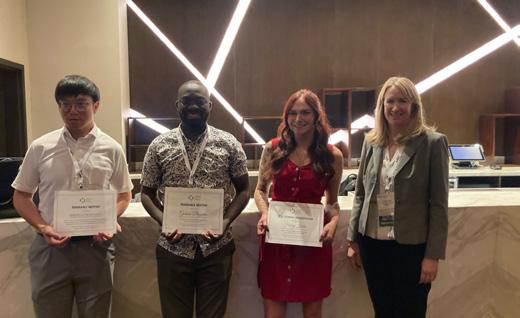

• “What’s Old is New
• “Taste & Odor Compounds in Reclaimed Water and Their Removal Through Ozone-Biological Activated Carbon Filtration for Potable Reuse”, Kesiuke Ikehata, Texas State University: The AWP system with ozone and BAC was found to be very effective in degrading and removing many of the T&O compounds present in the reclaimed water. Ozonation generated several aldehydes, including hexanal and octanal, which are also known T&O compounds. The concentrations of aldehydes were lower than their OTC and they were subsequently removed by BAC. Therefore, it is unlikely for the ozone-BAC AWP process to produce additional T&O concerns.
• “Overview of ozone based treatment solutions for MP reduction: Key Learnings from Switzerland and Europe”, Charlotte Bopp, Veolia Ozonia: In 2016, Switzerland demonstrated world leadership in addressing organic micropollutants by revising the country’s Water Protection Ordinance. The combination of ozone followed by a GAC filter emerges as the most complete and efficient solution. Combination of ozone with microgranular carbon is also a development track. Ozone followed by MBBR as polishing treatment is seen as an efficient and
compact solution without waste production.
• “Opportunities and Challenges for AOP for Inland Potable Reuse”. Xuan (Bryan) Liu, Garver: Advanced Oxidation Processes (AOP) are utilized in more than 50% of global potable reuse treatment facilities. Applying UV/ AOP downstream of reverse osmosis (RO) membranes has been the rule for potable reuse treatment. An alternative pre-treatment to RO via the use of ozone/ biological active filtration (O3/BAF) prior to UV/AOP. O3/ BAF can remove or degrade chemical contaminants. The research demonstrated that O3/BAF pre-treatment for downstream AOP is a viable alternative to (RO).
• “The Mechanics of a Hybrid Constant Concentration Control System for Pathogen Removal in Water Reuse”. Ben Christensen, Trussell
Australia’s Therapeutic Goods Administration (TGA) has listed Stabilized Aqueous Ozone (SAO®) as a disinfectant, signalling a significant milestone for manufacturer Tersano Inc.
Invented by Tersano, SAO is distinct from aqueous ozone in that it maintains efficacy as a disinfectant for up to 24 hours and cleaner for up to 6 days. Tersano’s unparalleled innovation of SAO has broadened the opportunities for ozone’s application in the commercial cleaning industry, with its status as a TGA-listed disinfectant being the most recent milestone.
As part of the Australian Government’s Department of Health, TGA is the regulatory authority
Technologies: Once operational in 2025, San Diego’s 30 MGD North City Pure Water Facility (NCPWF) will use an ozone system to treat tertiary wastewater upstream of biological activated carbon (BAC) filtration and full advanced treatment. The ozone system provides disinfection, removal of trace organic compounds, and enhances the removal of TOC in the BAC filters.
• “Removal of Antibiotic Resistant Bacteria and Antibiotic Resistance Genes as well as effects on microbial community and anaerobic digestion by ozone-based disintegration of excess sludge”, ShengChun Fang, Kyoto University: Excess sludge, a byproduct of wastewater treatment processes, is known to contain a complex mixture of substances including
See CONFERENCE NEWS on page 20
responsible for overseeing the safety, quality, and efficacy of therapeutic goods. Medicines, medical devices, vaccines, and other therapeutic products, including surface disinfectants, all fall under the administration’s regulatory scope.
TGA lists products as disinfectants only after they are proven to meet detailed quality, safety, and efficacy standards, such as passing specified microbiological tests. With TGA’s recent decision to list SAO as a disinfectant,
See TERSANO NEWS on page 19
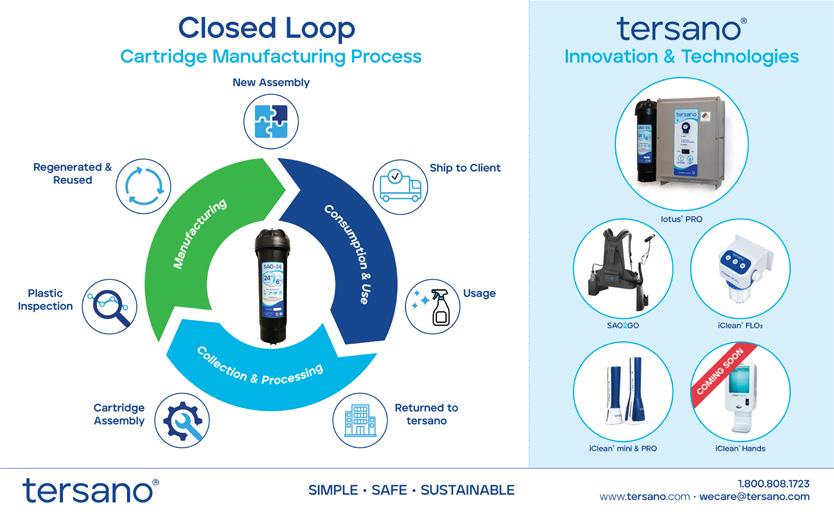
The Southern Nevada Water Authority has been awarded $350,000 in funding from The Water Research Foundation (WRF) for the research project “Ozone Nanobubble Technology for Water Treatment”. This research will conduct a rigorous evaluation of ozone nanobubble technology, focusing on analytical methods, water quality impacts, treatment efficiency, and cost effectiveness. The ultimate goal is to optimize ozone exposures to meet oxidation and disinfection goals in both drinking water and wastewater.
The research will be conducted across five tasks. Task 1 will complete a literature review summarizing existing knowledge of O3-NB technology, including generation methods, characterization and quantification techniques, properties (e.g., stability and behavior), and how the unique properties can be exploited for applications in water treatment. Task 2 will conduct bench-scale experiments focused on analytical methods, process control, and treatment applications including bromate formation. Task 3 will perform a pilot-scale comparison of O3-NBs to conventional ozone mass transfer systems (i.e. fine bubble diffusion, sidestream injection) and include an economic feasibility assessment. Task 4 will examine O3-NB fate and transport through two treatment evaluations in drinking water (Peoria, AZ) and wastewater (Melbourne, Australia). Task 5 includes an innovation assessment to determine whether O3-NBs can enhance the adsorption efficiency of

granular activated carbon (GAC) to remove perand polyfluoroalkyl substances (PFAS).


Eric Wert, President of the International Ozone Association and Water Quality Research and Development Manager at the Southern Nevada Water Authority (SNWA) will serve as the principal investigator (PI). Additional project team members include: SNWA (Ariel Atkinson (coPI)); Eric Dickenson (coPI); Carollo (Alan Domonoske (coPI), Dylan Lesan, Ron Joost, Jess Brown); Monash University (Arash Zamyadi (coPI)); Eawag (Urs von Gunten, technical advisor); EnvSights (Glen de Vera, Technical Advisor), Mazzei Injector Company (Jim Lauria); Moleaer (Christian Ference); Brown and Caldwell (Denise Funk); University of Colorado at Boulder (Fernando Rosario-Ortiz); Intuitech (Brock Emerson); and Orange County Utilities (Benjamin Yoakum).
WRF is the leading research organization advancing the science of all water to meet the evolving needs of the water sector. For more information, visit www.waterrf.org. It is anticipated that project results will be available in 2028. Stay up to date on project progress by visiting the WRF 5237 project website: www.waterrf. org/research/projects/ozone-nanobubblestechnologies-water-treatment



The City of Peoria (City) Greenway Water Treatment Plant (WTP) was placed into operation in 2002 with a treatment capacity of 16 million gallons per day. Historically, the Greenway WTP has experienced algae issues at its preliminary sedimentation basin, final sedimentation basins, and filters. The source water for the plant is primarily Salt River Project (SRP) water. Algae occurring in the raw water and growing in the plant basins has resulted in higher organic loading and chemical usage and can be a significant nuisance to plant operations. Over the past several years, the City has tried various methods to mitigate the algae ranging from copper sulfate application, manual scrubbing and physical algae removal, and prechlorination.

In April 2019 the City began piloting a proprietary system that is purported to incorporate nanobubbles with ozone dosing to control algae formation. After an initial 18 months of pilot scale testing the nanobubble system in the plant preliminary sedimentation basin, plant staff observed a reduction in algae in the preliminary sedimentation basin as well as some reduction in downstream plant process including the final sedimentation basins. In 2021, pilot testing was extended with a second set of proprietary units installed at the influent channel to the secondary sedimentation basins. Results from the extended pilot-testing indicating the technology was mitigating algae formation.
In 2023, a permanent, nonproprietary approach similar to the piloting system was constructed for long-term, permanent algae control and monitoring at both the presedimentation and final sedimentation basins (Figure 1). The permanent installation also generates ozone at the units, avoiding the challenges and costs of routing ozone feed lines throughout the water treatment plant. A presentation at the upcoming IOA-PAG Conference by WRF 5237 project team member Dylan Lesan (Carollo Engineers) will cover the pilot-scale efforts, the completed design and construction efforts, and the to-date status of the City’s long-term algae control and overall improved process performance.
The 153-mgd Western Treatment Plant is a conventional wastewater treatment plant that treats sewage from the city of Melbourne. Treated effluent lagoon systems are used for nutrient removal prior to advanced treatment for recycling. However, due to favorable growth conditions, these lagoons are prone to yearlong presence and spring to fall blooms of toxic cyanobacteria where Microcystis aeruginosa is the dominant species. Presence of these
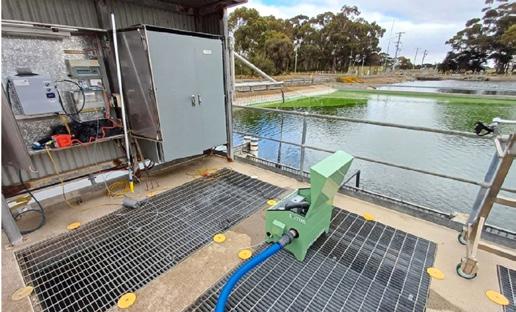
cells and their breakthrough prevent water recycling.
Treated effluent containing the algal blooms will be pumped from a holding pond into the first basin prior to the distribution to parallel oxidation and control streams. Monash University recently purchased a Moleaer Lotus O3-NB system that is being incorporated into the pilot, full-scale (Figure 2) and portable setup trials (Figure 3). The intent of this study is to evaluate the impacts of operational parameters on O3-NB performance (the duration of each test varies based on several conditions including oxidant residual and plans to look into algal cell survival post-oxidation; note that between each test the lagoons will be flushed and refilled with new contaminated water).
This trial will provide additional insights on O3-NB use, including oxidant decomposition rates, appropriate dosing quantities/ratios, resulting cyanotoxin release, and impacts on microbiota diversity. Sampling will target surface scums and water residing above the sludge/ sediment layer pre and post oxidation.
We look forward seeing updates on this project at future IOA Conferences!
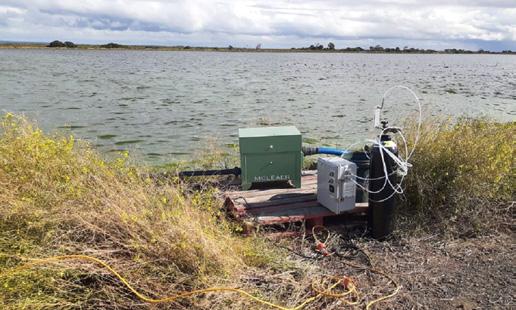

Renate Viebahn-Haensler and Olga Sonia León Fernández
Key words: redox medicine, redox bioregulation, preventive medicine, ozone therapy
Introduction
The best form of prevention against human infections through bacteria, viruses and other parasites is ozone disinfection of wastewater and drinking water as a highly effective, well-known method. As a therapeutic measure, various preclinical studies showed
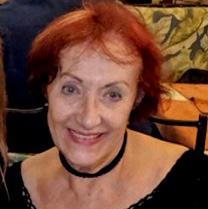
promising results, which are being revisited and reconsidered in times of pandemics and have led to interesting results in recent clinical trials and reports, as presented by the example of protective measures against COVID-19 in particularly vulnerable clinical personnel. The pharmacological basis is to equip the cells and organs with a potent protection and defense system by upregulating the cellular antioxidants, strengthening the redox balance of glutathione and modulating the immune response.
Prevention
Liver and kidneys are the organs that are particularly susceptible to the side effects of various chemotherapeutic agents and preventive measures are of utmost importance, last but not least in oncological patients.

wThree year warranty on all parts & labor
wFive year warranty on the long-life UV lamp
wTraceable to NIST
wPressure & temperature compensated
w19" rack or cabinet versions
wCompliance: cTUVus listed, CE, RoHS
wInternal ozone generator for automatically testing the utility scrubber every 24 h or on command
wTwo scrubbers (utility & reserve), automatically switched on scrubber failure
wSample gas flow 1 l/min, internal pump auto controlled by an electronic flow meter
wCabinet version: IP65 (splash proof)
Unique features:
m Diagnostics software
m Sniffer Mode
m Scrubber test on demand
m Dimensions selectable: 3 ppm & µg/m v
m Firmware updates in the Field
m Three EMO circuits, User configurable

Monitoring the ambient ozone concentration is trace analysis! Only 100 parts per billion usually have to be measured. UV photometry is the only method which meets the precision and reliability demands of this delicate ozone measurement task.
Prevention of liver intoxication (CCl4 tetrachlorocarbon). Preclinical trial in rats. As known from empirical medicine the liver is the organ that responds the most efficiently to systemic ozone application (Major autohemotherapy MAH or rectal insufflation RI); liver-specific enzymes approach normal values already after a few treatments. The detoxification, i.e. biotransformation, of the liver is restituted, with glutathione balance playing a crucial role.
On this basis and some preliminary studies, it has been postulated that hepatocellular damage by free radicals could be prevented by ozone administration: ozone preconditioning which is discussed here using CCl4 as a classical liver toxic agent in an animal model. Procedure: Ozone via 15 rectal insufflations administered 1x per day (c 50 mg/L, vol. 4-5 mL; 1mg O3/kg rat) followed by intraperitoneal (ip) CCl4 injection. Determination of the different parameters was performed directly using liver homogenisates; for the complete study, including biochemical determinations and histological investigations see León et al. 1998.
Results: Ozone oxidative preconditioning prevents CCl4 liver damage through free radicals in rats shown here on the basis of the antioxidants as repair parameters: SOD (superoxide dismutase) and GSH (glutathione red. form) as discussed in part II. “Overall mechanism of action in chronic inflammatory diseases. The anti-inflammatory and immunomodulatory effect” in Ozone News 52/2.
SOD: CCl4 decreases SOD (control group) whereas the ozone group is protected: high SOD level, slightly higher than the control group, which indicates prevention.
Prevention of kidney intoxication in an animal model, here cis-Pt as chemotherapeutic, frequently used in cancer patients).
Nephrotoxicity is the dose- and time-limiting factor of cisplatin (cis-Pt) treatment in cancer patients. It causes chronic oxidative stress e.g. by lipid peroxidation and an imbalance of the cellular redox system with a low activity of the antioxidative enzymes; finally, GSH is depleted. Systemic ozone in the form of rectal insufflation has proven itself to be an oxidative preconditioning

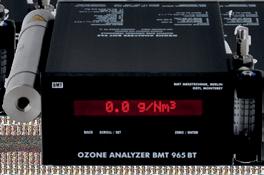
If you are Tired of Battling Service Related
wThree year warranty, on all parts & labor
wFive year warranty on the long-life UV lamp
wContaining over thirty years of experience in designing highest quality UV photometers
wBackward compatibility with BMT 964 series of analyzers
wPanel mount, portable, and wall mount models (IP65)
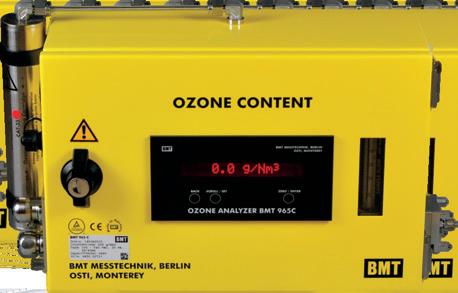
wState-of-the-art design, highest quality materials
wUnprecedented accuracy, stability, and reliability through design competence
wProven by thousands of installations around the world
wThe companion to your PC or PLC
wUSB port for field updates, log downloads and PC communication (Diagnostics)
wCalibration error less than 0.5% of range 3
wRanges from 0 - 2 to 0 - 800 g/Nm 3
wSelectable dimensions: g/Nm, %wt/wt, ppmv
wFull internal diagnostics
wLife long logging of Event & Error Log and concentration with date and time stamp
wWindows software for easy control included
wPower supply: 85 - 264 VAC or 12 - 36 VDC
wCabinet with enhanced sample gas filtering
wCabinet certified to NRTL / cTUVus and for ship operations (USCG)
wModbus RTU or TCP available
-
OSTI Inc. (Ozone Systems & Technology Int'l) - P.O. Box 63928 - Colorado Springs, CO 80962 - Phone +1-831-649 1141www.osti-inc.com
method to protect the kidney from cisplatin toxicity (Borrego et al. 2004).
Cisplatin diminishes GSH drastically compared to healthy controls; pretreatment with ozone at different concentrations shows an improvement in kidney protection with the optimum at concentrations of 20 to 30 g/mL. Ozone concentrations of 50 and 70 g/mL demonstrate the toxic aspect of ozone. Serum creatinine develops accordingly. These animal experiments contributed significantly to reconsidering concentrations and eventually resulted in the “Low-Dose Ozone Concept”. This has repeatedly been confirmed in all subsequent preclinical and clinical studies.
The ability of systemically administered ozone to protect liver and kidneys against the toxic side effects of chemotherapy and ROS produced by cancer cells themselves should logically result in the integration of ozone applications in the form of RI (rectal insufflation) or MAH (major autohemotherapy) into a complementary oncology concept. Hereby, oxidative stress is diminished and the antioxidant capacity of healthy cells and organs increased: this does not apply, however, to cancer cells at the recommended concentration of 10 to 20 g/mL, as demonstrated (among others) in HeLa cells. The low-dose ozone concept with its mild oxidative eustress activates the antioxidant pathways via the nuclear factor Nrf2 without an activation of cancer cell proliferation (Costanzo et al. 2015; 2020 Galiè et al. 2019).
Prevention of MTX (methotrexate) liver intoxication. Rheumatoid arthritis (RA), as a chronic inflammatory disease, is an exemplary indication of the low-dose ozone concept. Part of a basic therapy in RA patients is the conventional use of methotrexate, which often has to be discontinued due to its liver toxicity. As proven in different clinical trials, systemic ozone application could protect the liver from MTX toxicity (León et al. 2016).
Aging: the aging process is always accompanied by a high level of oxidative stress and antioxidant insufficiency, as measured in preclinical studies, particularly in liver and kidneys. Regulating the antioxidant production and reducing oxidative stress ozone could be an ideal therapeutic agent for influencing the aging process as shown here in a clinical trial, thus making ozone a preventive against age-related diseases.
Elderly patients aged between 60 and 75 years with diabetes and rheumatoid arthritis as comorbidities were examined in a controlled, randomized clinical study. All
of them received a basic therapy. Control (n=15) received the basic medication only, ozone group (n=15) : basic medication plus ozone treatment. Ozone concept: 20 rectal insufflation over 4 weeks, 5 per week. Concentrations: 20 up to 30 μg /mL, slowly increasing week by week. As redox parameter, we once more use GSH as defense marker and MDA as oxidative stress parameter after 4 weeks of treatment without and with ozone.
Compared within the baseline (start at 450 μM), GSH dropped by 67 % control group after 4 weeks with basic treatment only, whereas GSH showed no change in the ozone group (p<0.05).
Ozone treatment attenuates the aging process, thus being a preventive against age-related diseases: GSH shows a 48% higher level after 4 weeks compared with the control group. As a consequence of this upregulation of antioxidants through ozone, the oxidative stress, measured as MDA, is 43 % lower than in the control group without ozone treatment, p<0.05, see Figure 1 (León et al. 2022).
We cannot stop the aging process, but we can influence high oxidative stress as one of its main causes due to mitochondrial aging and dysfunction. Low-dose ozone applications are able to intervene here as redox regulator and offer at least one preventive measure against age-related diseases.
The development of the redox parameters GSH and MDA (in μM) in elderly patients with comorbidities: Rheumatoid arthritis and diabetes (n=30). Control (n=15): after 4 weeks of basic treatment only; ozone group after 4 weeks of basic treatment plus ozone. Ozone administration: 20 rectal insufflations, volume: 200 mL and ozone
concentrations: 20 to 30 μg /mL, increasing from week 1 to 4. GSH shows a level 48 % higher after 4 weeks compared with the control group. MDA, is 43 % lower than in the control group without ozone treatment, p<0.05.
The best remedy for viral diseases is prevention, and the question is, as consequence: can we contribute with low-dose, systemically administered ozone in the form of major autohemotherapy (MAH) or rectal insufflation (RI) to the protection of particularly vulnerable individuals against COVID-19?
Physicians and clinical staff caring for COVID-19 patients find themselves in such a difficult situation and are thus more likely to be open to preventive measures. We therefore focus on clinical reports involving this group.
1. A clinical trial conducted at the Indonesian Police Central Bhayangkara Hospital and the Department of Forensic Medicine, Jakarta University, presented at the 26th Ozone World Congress of the International Ozone Association IOA in Milan, Italy, July 2023. Procedure. 150 health care professionals, including 25 physicians and 125 nurses (exclusion G-6PDH glucose-6-phosphate dehydrogenase deficiency) received systemic ozone treatments in the form of MAH, RI or vaginal insufflation on five consecutive days before coming into contact with the COVID-19 patients in the hospital with a high risk of infection via the corona virus. Concentration and dose were chosen according to the guidelines (ViebahnHaensler 2012).
Results. None of the 150 health care professionals were infected by corona virus, all of them remained PCR negative. Preventive ozone treatment was able to stabilize the immune status of the involved persons. During the same period, there were nursing emergencies in other hospitals due to the high sickness rate, and care of the patients collapsed (Chaijadi et al. 2023).
2. A retrospective study at the Marmara University together with the Health Sciences University Sisli, Istanbul reports the very same results: Could ozone therapy be used to prevent COVID-19?
Procedure: 71 persons who completed at least 10 sessions of MAH in accordance with the low-dose ozone concept within six months participated in the retrospective study. 45% of them were medical professionals, all of them had contacts and travel
history. 50,7 % were aged over of 50 years and 52% had comorbidities: consequently their risk of developing covid-19 was higher than that of the normal population in Turkey Gencer-Aalay 2022. Two of the included persons were infected, acquiring COVID -19 without severe symptoms corresponding to 2.8% of the participants.
3. The effect of systemic ozone application on the activity of B-lymphocytes and the level of antibodies in coronavaccinated persons.
A retrospective clinical trial (Medina et al. 2022) including 109 persons, mostly triple vaccinated, 57 of them receiving systemic ozone application as MAH (60%) or rectal insufflation (40%). 52 persons not treated with ozone served as controls. No person in the ozone group was PCR positive when compared with 48 persons in the controls who developed weak or moderate COVID (omicron).
Activated B lymphocytes (CD23) were elevated in the ozone group, probably via ozone-activated helper cells. IgG values ranged between 120-170 AU/mL compared with controls having 40 to 50 AU/mL (values below 10 AU/mL are considered as being a weak immune response (Medina et al. 2022). Other trials are reported using intramuscularly administered minor autohemotherapy or ozonized saline; however, we here only refer to reports of pilot studies applying ozone systemically and applying the standardized methods of MAH and RI.
Low-dose ozone behaves as a bioregulator: in cases of chronic oxidative stress antioxidants are upregulated, oxidative stress decreases and the glutathione system, the GSH/GSSG balance, is reorganized. The pharmacologically active substances are most likely to be the “ozone peroxides” as intermediate molecules, reaction products from O3 and unsaturated fatty acids (isolated double bond, not polyunsaturated) present in each cell membrane in high quantity. Through the reduction by glutathione, regulation is induced via different nuclear factors and the specific antioxidants and cytokines are produced (see part II of this series in Ozone News 52/2). By means of this basic mechanism, systemically administered ozone (MAH or RI) is found to be an interesting and useful therapy in redox medicine, especially in prevention and convalescence and chronic inflammatory processes. In fact, GSH balance has proven to be the concentration and dose limiting factor; GSH must never decrease during treatment. Liver
protection and convalescence has been demonstrated by a restored glutathione balance and activated steps of liver detoxification, whereby the reduced form, GSH, plays a major role in intact liver activity or biotransformation, respectively.
In order to consolidate the scientific and clinical basics laid down over the last decades, extensive clinical trials should be carried out; for this purpose, the following indications are suggested: prevention of side effects of hepatotoxic and nephrotoxic drugs e.g. in oncology, viral diseases, chronic inflammatory diseases, diabetes type 2, rheumatoid arthritis.
References
Borrego Aluet, CA, Zullyt B. Zamora, Ricardo Gonzalez, Cheyla Romay, Silvia Menendez, Frank Hernandez Teresita Montero and Enys Rojas (2004) Protection by ozone preconditioning is mediated by the antioxidant system in cisplatin-induced nephrotoxicity in rats. Mediators Inflamm 13(1), 13-19, https://doi.org/10.1080/096293504 10001664806,
Chaijadi, D. Hendradiana, A. Tjahjono, P.D.; Kusumaningsih, E. Hariyanto; Siagian, C.Atmadja, D.S. Viebahn-Hänsler, R . (2023) The Role of Ozone Therapy as Adjuvant in the Management of Covid-19 in Indonesia. In Proceedings of the IOA 26th Ozone World Congress and Exhibition, Milan, Italy, 2–7 July 2023.
Costanzo, Manuela, Alessandro Romeo, Barbara Cisterna, Laura Calderan, Paolo Bernardi, Viviana Covi, Gabriele Tabaracci, Manuela Malatesta (2020). Ozone at low concentrations does not affect motility and proliferation of cancer cells in vitro. European Journal of Histochemistry; volume 64:3119, DOI 10.4081/ejh.2020.3119
Costanzo, M, B. Cisterna, A. Vella, T. Cestari, V. Covi, G. Tabaracci, M. Malatesta (2015)
Low ozone concentrations stimulate cytoskeletal organization, mitochondrial activity and nuclear transcription European Journal of Histochemistry; volume 59:2515, https://dx.doi.org/10.4081%2Fejh.2015.2515
Falzoni, W.; Senvaitis, M.I.; Iwasa, S. (2021) COVID-19 prophylaxis with ozone therapy. Acupunct. Electro-Ther. Res., 46, 35–36.
Galiè, Mirco , Viviana Covi , Gabriele Tabaracci and Manuela Malatesta (2019) The Role of Nrf2 in the Antioxidant Cellular Response to Medical Ozone Exposure.
Int. J. Mol. Sci., 20, 4009; doi:10.3390/ijms20164009
Gencer-Aalay, K.; Sahin, T. Could ozone therapy be used to prevent COVID-19? Marmara Med. J. 2022, 35, 196–201. Available online: https://dergipark.org.tr/tr/pub/marumj (accessed on 30 May 2022).
Léon, O.S., S. Menendéz, N. Merino, R. Castillo, S. Sam, L. Pérez, E. Cruz, and V. Bocci (1998) Ozone Oxidative Preconditioning: A Protection Against Cellular Damage by Free Radicals. Mediators Inflam. 7: 289–294, DOI 10.1080/09629359890983
León Fernández, O.S.; Takon Oru, G.; Viebahn-Hansler, R.; López Cabreja, G.; Serrano Espinosa, I.; García Fernández, E. Medical ozone arrests oxidative damage progression and regulates vasoactive mediator levels in older patients (60–70 years) with oxidative etiology diseases. Front. Physiol. 2022, 13, 1029805. https://doi.org/10.3389/ fphys.2022.1029805.
León, F.O.S.; Viebahn-Haensler, R.; López, C.G.; Serrano, E.I.; Hernández, M.Y.; Delgado, R.L.; Tamargo, S.B.; Takon, O.G.; Polo, V.J.C. (2016) Medical ozone increases methotrexate clinical response and improves cellular redox balance in patients with rheumatoid arthritis. Eur. J. Pharmacol., 789, 313–318. doi:10.1016/j. ejphar.2016.07.031
Medina, J.G. (2022) Comparative analysis of 2 groups of people according to age and sex, vaccinated triple versus covid-19, were subjected to quantitative analysis of antibodies and B lymphocytes after ozone therapy. J. Ozone Ther., 6, 11–12. https://ojs.uv.es/index.php/JO3T/article/ view/25981
Viebahn-Haensler, R.; León Fernández, O.S.; Fahmy, Z. (2012) Ozone in medicine: The low-dose ozone concept. Guidelines and treatment strategies. Ozone Sci. Eng., 34, 408–424. DOI: 10.3390/ijms22157890
Carl Wilkinson, Statiflo Corporation
Rebecca Gernetzke, Statiflo Corporation
When Anderson Regional Joint Water System (ARJWS) started experiencing taste and odor problems due to extreme spikes in geosmin and MIB compounds found in their source lake, they began and extensive process to find the best treatment solution. After exploring several options, Xylem conducted a pilot study, demonstrating the effectiveness of an AOP solution (Xylem, 2019).

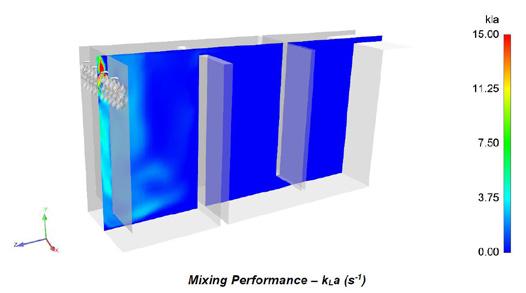

Statiflo worked with Xylem to design a highly efficient and cost-effective system to disperse both pre-treatment ozone and hydrogen peroxide to fit the existing 48 MGD, two train basin contacting arrangement. To optimally work within the existing plant, minimizing pressure drop, and achieve high mass transfer efficiency were main drivers. Statiflo was able to customize a mixer for the basin dimensions, while keeping pressure drop < 2.6” WC at peak flow of 30 MGD. Like most, the ARJWS facility operates over a wide range of seasonal and daily plant flows. Therefore, a critical factor of the design was to ensure optimal mixing at the low flow condition while staying below the headloss limitation at the peak flow point.
Statiflo recognizes the importance of injection when it comes to mixture quality. This specific system was customized so the sidestream solution was injected in the correct locations, relative to the static mixing elements which make up the Contactor Static Mixer (CSM) as shown in the CFD image. The complete system design, including the location of the sidestream injection, was engineered using Statiflo’s proprietary design software and analyzed using CFD. The CFD results showed exceptional mixture quality and predicted ozone transfer.
To compare the design, operational data was provided to Statiflo by ARJWS between November 2021 and November 2022. This data was analyzed to verify the mass transfer efficiency of the Statiflo Gas Dispersion System against the actual observed data and in the light of process parameters required in various operational seasons. Over the dataset year, the full range of operational flowrates and ozone dosages were tested, and the final water quality was monitored constantly.
Performance data showed that an average ozone Mass Transfer Efficiency (MTE) in excess of 98.5% was achieved, across all flow conditions, using an applied ozone dosage up to 4mg/l of 10%wt. ozone.
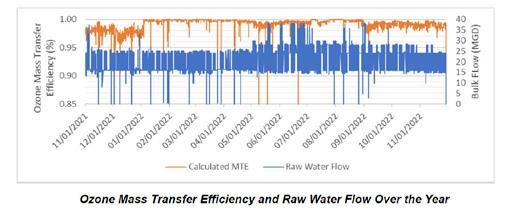
Sidestream design and with effective dispersion and mixing of ozone gas are critical for achieving optimal performance and the outcomes like those demonstrated at ARJWS. The Statiflo gas injection sidestreams are designed to draw the ozone/oxygen gas into the system via Venturi injectors which discharge a non-uniform gas/ liquid mixture with a wide range of bubble diameters. To allow for optimal ozone transfer, the gas bubbles need
to be evenly sized and uniformly distributed across the cross section of the pipe. The Statiflo Predispersion Static Mixer (PDM) is designed for this purpose.
As the irregularly sized ozone gas bubbles flow through the PDM, along with a fixed sidestream water velocity, they are sheared down to a bubble diameter of less than 1,000μm. This forms a high gas concentration ozonated sidestream. The sidestream ozonated water solution is then piped to the Contactor Static Mixer (CSM), installed directly within the ozone contact basin.

This project has a design gas: liquid ratio of ~0.9:1 in the sidestream (Table 1). This is relatively high compared with values typically discussed and studied when evaluating ozone solubility and transfer (Rakness et al. 2018). Statiflo’s design ethos aims to use the sidestream solely as a gas delivery system, injecting the ozone into the sidestream so that it can be delivered to, and mixed with, the bulk flow as quickly as possible.
By increasing the gas: liquid ratio from the more conventionally reviewed values of 0.1:1 to 0.3:1 (Wert et al, 2017) significantly smaller volumes of water are required. Additionally, the sidestream PDM uniformly shears the gas bubbles for optimal transfer. An increase in sidestream pressure may be necessary, yet still results in significant power savings, reduced maintenance, and a more economical operational life. Additional capital savings in equipment footprint, smaller motor HP pumps, smaller diameter stainless steel pipework, valves, etc. can be difficult to quantify retroactively, but offer real benefit to overall project costs.
Table 1: Gas: Liquid Ratio and Transfer Efficiency at Typical Plant Conditions
The ARJWS plant contains two separate treatment trains, each with its own Gas Dispersion System (GDS). Each GDS in turn operates two sidestreams with a gas to liquid ratio approaching 1:1.
Table 2: Cost Analysis on Impact of Sidestream G/L Ratio
Sidestream Flow Rate (assumed constant of 4 total sidestreams)
Ratio
If using a more traditional ~0.3:1 sidestream gas to liquid ratio, the sidestream injectors would need a water flow of 528 gpm at 140 psi. Using the same factors and power cost, the total pumping cost would be closer to $90,000 per year. Over a 20-year design life, this equates to savings of more than $1,000,000. As these figures are exclusively evaluating pumping power costs, further assumptions could be made that the cost to service and maintain smaller sidestream pumps would result in additional savings.
Static mixers are often discounted on assumptions that they will result in increased overall plant pumping costs due to mixer headloss, as well as inability to perform across the full flow range. As noted above, the CSM used in this project was well within its design range at the full basin flow range of 8 – 30 MGD, producing a fully mixed,
plug flow condition across operating parameters. The headloss cost of this mixer can be evaluated under similar assumptions to the above sidestream pump evaluation. Assuming maximum design plant flow for a continuous year with an added system headloss of 2.6” WC, the additional pump cost of $600/year is quickly realized against the $1.1M system savings.
See full paper at www.statiflocorp.com
Xylem, Inc. (2019) Xylem expertise helps South Carolina utility eliminate taste and odor issues in drinking water. [online] Available at: www.xylem.com
Kerwin L. Rakness, Glenn Hunter, Julia Lew, Bill Mundy & Eric C. Wert (2018) Design Considerations for CostEffective Ozone Mass Transfer in Sidestream Systems, Ozone: Science & Engineering, 40:3, 159-172, DOI: 10.1080/01919512.2018.1424532
Wert, Eric & Lew, Julia & Rakness, Kerwin. (2017). Effect of Ozone Dissolution Systems on Ozone Exposure and Bromate Formation (In Press). Journal - American Water Works Association. 109. 10.5942/jawwa.2017.109.0048.
Continued from page 9 Australia joins a prestigious and ever-growing number of countries recognizing SAO’s viability.
“We wish to extend our gratitude to regulators like TGA. By allowing us to make SAO available in more countries, we are witnessing our mission of Changing The Way The World Cleans in action.”
To learn more about Tersano’s revolutionary cleaning technologies, visit www.tersano.com.


• uniformly distributes ozone
• minimizes size & cost of ozone contacting system
IOA-PAG
AUGUST 2024
Carlo Ruggeri bluecotech@bluecotech.com
Bluecotech srl via Cav Bordogna 5 Calvisano, Italy 25012
Shalongo Angula ANGSHA003@myuct.ac.za University of Cape Town 9 Lyle Road
Cape Town, Western Cape
UNITED STATES
Shane Schultz
shane.schultz@carusllc.com
Carus LLC
315 Fifth Street Peru, IL 61354
Todd Pickle todd.pickle@lvvwd.com
Southern Nevada Water Authority
100 S. City Pkwy, Suite 700 Las Vegas, NV 89106
Douglas Guillaume douglas542@icloud.com
NV Energy
237 Amber Bluff St. Henderson, NV 89012
Clayton Vacek clayton.vacek@ozonesolutions.com
Ozone Solutions
2714 LillyBrook Lane New Braunfels, TX 78130
Miguel Gomez miguel.gomez@ozonesolutions com
Ozone Solutions
9359 Village Lance San Antonio, TX 78250
Jonett Clay jclay@sandiego.gov
City of San Diego 4940 Eastgate Mall San Diego, CA 92114
Kevin York kevin.york@ozone solutions.com
Ozone Solutions 451 Black Forest Road Hull, IA 51239
Brandon Robinson brandon@wcwcd.gov
Washington County Water Conservancy District 533 E. Waterworks Drive St. George, UT 84770
Jordan Jones jordan@wcwcd.gov
Washington County Water Conservancy District 533 E. Waterworks Drive St. George, UT 84770
Brie Thompson brie@wcwcd.gov
Washington County Water Conservancy District 533 E. Waterworks Drive St. George, UT 84770
Austin Schlenker austins@govapex.com
GOVAPEX
2971 Oxbow Circle, Suite B Cocoa, FL 32926
Brody Oglesby brodyo@govapex.com
GOVAPEX
2971 Oxbow Circle, Suite B Cocoa, FL 32926
Robert Jeyaseelan robertj@govapex.com
GOVAPEX
2971 Oxbow Circle, Suite B Cocoa, FL 32926
Meena Ejjada ejjada@unlv.nevada.edu
UNLV
4505 S Maryland Parkway Las Vegas, NV 89119
Collin Poage
collin.poage@louisvilleky.gov
Louisville Zoo
1100 Trevilian Way Louisville, KY 40213
Lonnie Lamb
lonnie.lamb@louisvilleky.gov
Louisville Zoo
1100 Trevilian Way Louisville, KY 40213
Maggie Sahr
msahr@fargond.gov
City of Fargo 435 14th Ave S. Fargo, ND 58103
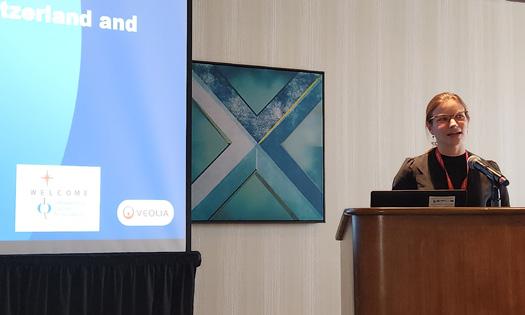
Continued from page 9
inorganic nitrogen, inorganic phosphorus, antibiotics, and other contaminants. The research focuses on the quantification of ARB, ARGs, and physicochemical properties in excess sludge from municipal wastewater treatment plants, evaluating the effectiveness and potential of ozone treatment. The impact of ozone on the fate of E. coli and ARGs during anaerobic digestion was assessed, revealing enhanced removal efficiencies for antibiotic-resistant E. coli and ARGs without rebound effects.
• “Raising the Dead: Bringing a Mothballed Ozone System to Life”. Maxime Beaulieu, Stantec: In 2013, as part of upgrades to the Pierrefonds WTP in Montreal Canada, a completely new intermediate ozone system was installed to replace the former outdated air-fed post-ozonation system. However, due to contractual issues the new ozone facility was never commissioned. Fast forward to 2019, the City awarded new contracts to resume work at the plant including commissioning of the new ozone system.
On the technical side, mechanical, electrical, process, and integration and programming issues will be reviewed. Since 2023, the ozone system at the Pierrefonds WTP has now been up and running, serving its critical dual functions of taste and odor reduction and oxidation of organic matter in advance of the WTP’s new Biologically activate filters.
The Technical tour took place on Thursday, August 29 to the Clark County Water Reclamation District and to the Shark Reef Aquarium at Mandalay Bay.
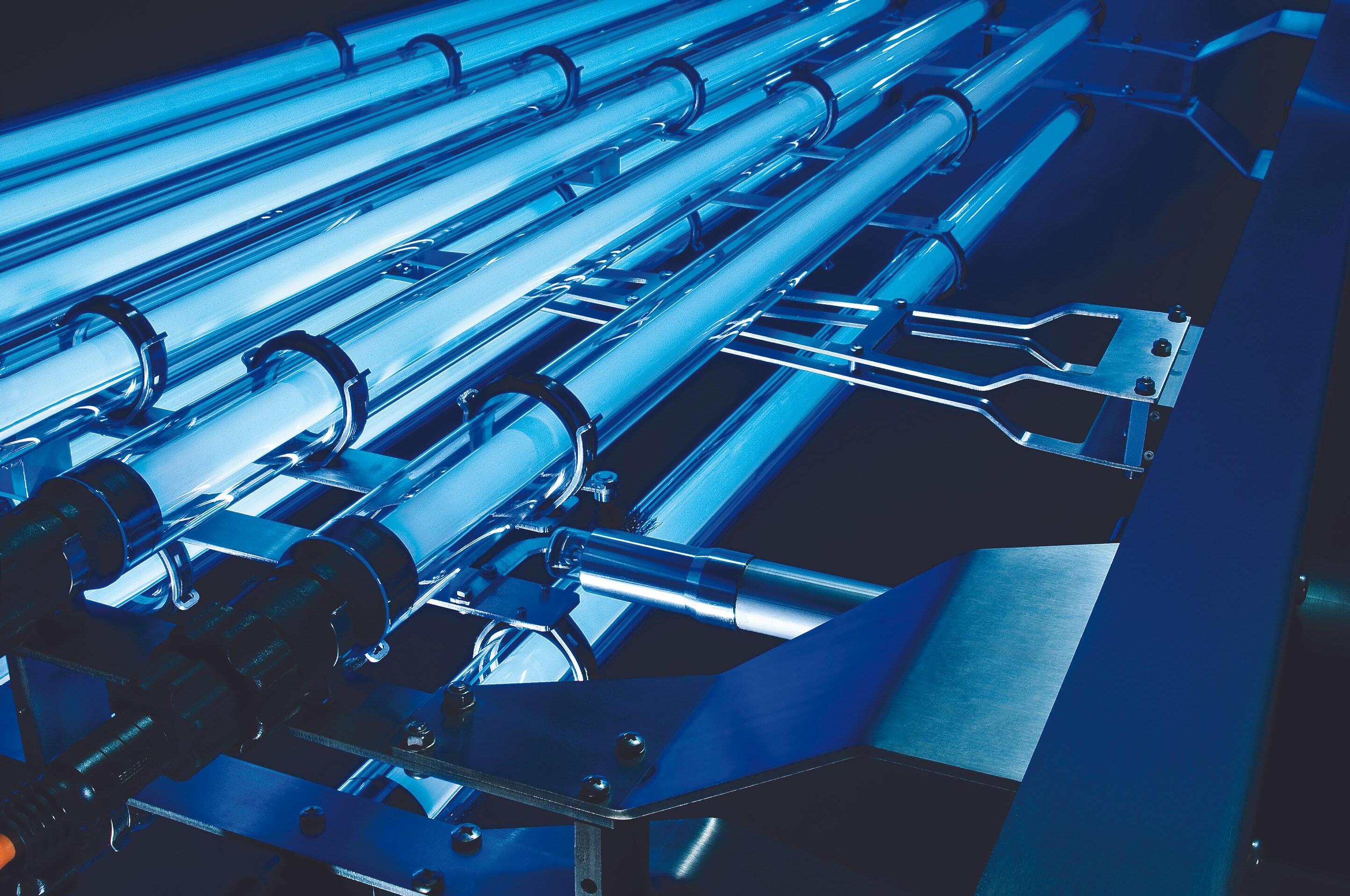
Attention researchers and experts in water treatment!
We are excited to announce the call for papers for the 7th edition of the International Conference Series on Advanced Oxidation Processes (AOPs).
Whether you are investigating novel AOPs, exploring environmental applications, or addressing emerging challenges, we invite you to contribute your original research to this conference publication.
Don't miss this opportunity to showcase your work, connect with peers, and contribute to advancing knowledge in water treatment technologies.
We look forward to receiving your submissions!

Submit by 30. September 2024
April 8 - 10, 2025
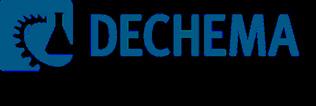



The goal of the CIPOA conference is to gather scientists, scholars, and professionals to present their research findings and discuss future directions and opportunities concerning the fundamentals and applications of Advanced Oxidation Technologies in the environmental, chemical, food, energy, and climate sectors, towards a sustainable and carbon-neutral circular economy. Find



EA3G2024 renews with a long series of successful conferences which were organised to provide an international forum for all concerned including fundamental, engineering and applied aspects of oxidation techniques involving ozone and advanced oxidation systems.
The conference will be co-organised with the the Faculty of Engineering of the University of Porto and the University of Coimbra. Interestingly, EA3G2024 will take place after the Winter School on Contaminants of Emerging Concern (CECs) and Disinfection By-Products (DBPs): Occurrence, Impact and Eliminations to be held from 25 - 26 November 2024 at the same venue.
Population growth associated with increases in urbanization, in consumption, in industrialization, in pollution emissions already lead to shortages of water, food, raw materials and globally to excess resource use and climate change. However, climate and earth-resilient development is still possible by devoting greater efforts to certain key sectors: reduction of emissions to air, better resources management and preservation of the natural ecosystems. This involves particularly the implementation of advanced technologies.
EA3G2024 event thus aims to present an overview of the current state of knowledge and latest advances regarding the use of Ozone and Advanced Oxidation to provide solutions face to these challenges.
Topics of interest relevant to the Conference theme include but are not limited to the combinations of:
> Reaction mechanisms, kinetics, by-products
> Ozonation
> Advanced oxidation
> Disinfection
> Ozonolysis
> Hydraulics, hydrodynamics, mass transfer, contactors
> Modelling, validation, system design
> Analytical methods
> Agri-Food production, safety and quality


27 – 29 November 2024
Porto, Portugal
> Scientific and technical sessions with oral and poster presentations, discussions
> Networking opportunities and Exhibition of ozone related products and services
> Technical visit of ozone plant(s)
> Conference dinner for delegates and their guests
Researchers, scientists, practitioners are invited to propose oral or poster presentations related to the theme topics.
Authors should submit an extended abstract in English of two pages (with tables and figures) by 30 May 2024 preferably online at www.ioa-ea3g.org/ea3g2024/
The Programme Committee will notify authors about the acceptance of their papers for oral or poster presentation before 15 July 2024
During the conference, the Programme Committee will select and award a prize to the best paper presented by a PhD student. All accepted papers will be printed in the conference proceedings handed out to participants at registration. After the conference, the editors of the IOA journal “Ozone: Science & Engineering” will make a final selection for a potential publication as peer-reviewed article.
The exclusiveness of the conference theme allows exhibitors and sponsors an ideal opportunity to meet a unique and targeted audience. For detailed information on sponsoring options, please contact the IOA-EA3G secretariat to make the most of this event.
> Waste, Air and Soil treatment
> Wash water, process water
> Wastewater treatment, recycling and reuse
> Ecosystem preservation
> Industrial applications
> In-field full scale applications
> Product / Process R&D
> Hybrid ozone processes
> Innovative applications
> Regulations


Registration will be available mid-June 2024. The registration fee will cover scientific and technical sessions, book of abstracts, electronic proceedings, lunches, coffee breaks, exhibition and technical tour.
The official language will be English. The Conference venue will be World of Wine in Porto, Portugal.
For any request: IOA-EA3G Secretariat
E-mail: ioa@esip.univ-poitiers.fr
For updates: Website: www.ioa-ea3g.org/




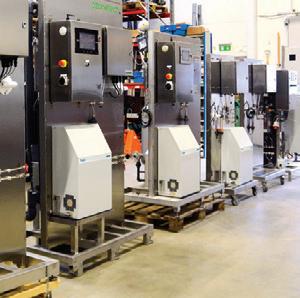
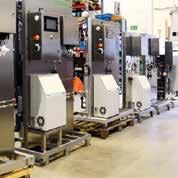

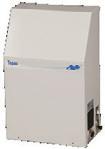


■




■
■
■
■

Widest
High
High
Eliminate
Eliminate
Lowest
Lowest
Ease
Ease


